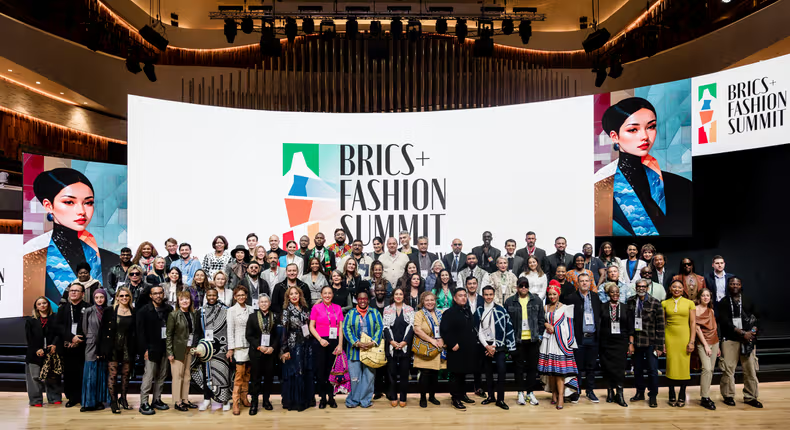The BRICS+ Fashion Summit in Moscow culminated in a significant milestone: leaders from fashion associations representing over 50 countries signed a memorandum to create the BRICS International Fashion Federation. This new entity aims to establish influential networks, enhance international ties, promote sustainability in the industry, and provide emerging fashion talents with growth opportunities.
Brian Ahumuza, CEO and Founder of the Uganda Fashion Designers Association, expressed optimism about the federation’s potential. He noted, “The BRICS International Fashion Federation can foster international collaboration by creating structured opportunities for designers, artisans, and manufacturers to engage in joint ventures and exhibitions. This initiative can open new markets for designers from countries like Uganda to connect with audiences in Russia, Brazil, and India.”
Sunil Sethi, Chairman of the Fashion Design Council of India, emphasized the necessity of this alliance among emerging markets. He stated, “Brands, designers, and markets face similar challenges, from supply chain disruptions to environmental issues, which are easier to tackle collectively. Emerging markets require a platform to amplify our voices in a landscape dominated by a few global brands.”
The memorandum was signed by prominent figures, including CEOs of major fashion weeks and heads of textile associations from countries such as India, South Africa, Russia, and many others.
Natalya Sergunina, Deputy Mayor of Moscow, underscored the initiative’s importance, highlighting it as a testament to shared goals and the growth potential within the global fashion community.
Key objectives of the federation include supporting local talent, promoting sustainable fashion, facilitating cultural exchange, and developing educational projects. The focus will also be on leveraging new technologies, preserving cultural identities, and supporting traditional arts and crafts.
The BRICS International Fashion Federation aims to provide a global platform for visionaries and promote eco-friendly practices, prioritizing slow fashion and mindful consumption to reduce the industry’s carbon footprint.

